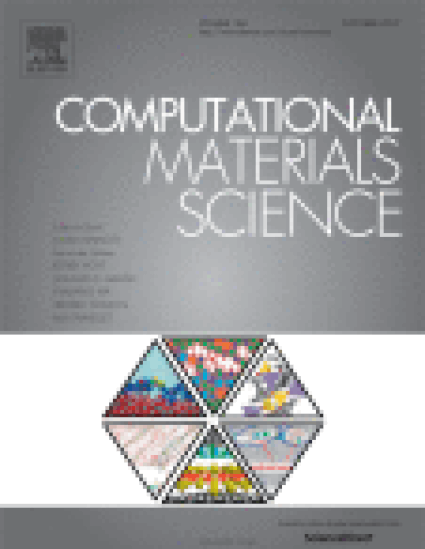
Article
Computational Study of Metal/Ceramic Interfacial Adhesion and Barriers to Shear Displacement
Computational Materials Science
(2019)
Abstract
First principles density functional theory calculations were performed to understand the electronic and atomistic factors governing adhesion and resistance to shear for simple metal/ceramic interfaces. The work of adhesion and two-dimensional generalized stacking fault energies were calculated and examined for the 9 interfaces resulting from the combination of three metals (Cu, Ti, and Cr) with three ceramics (TiN, VN, and CrN). It was found that minimizing the lattice mismatch between metal and ceramic was an important factor for maximizing adhesion and barriers to shear, especially a few metal layers away from the chemical interface. Electron or charge density was found to be a good descriptor of shear barrier heights between metal layers (typical of shear displacement away from the chemical interface), while not very good for nitrogen-metal bonds (typical of the chemical interface). Cu/ceramic interfaces in particular were more stable when they were in semi-coherent interfacial configurations, but the barriers to shear were usually smaller than for coherent configurations, which is attributed to the complex nature of atomic interfacial shear movement resulting from the greater diversity of atomic environments and interactions.
Keywords
- Metal/ceramic interfaces,
- GSFE,
- Work of adhesion,
- DFT,
- Charge density,
- Shear displacement
Disciplines
Publication Date
Winter October 19, 2019
DOI
https://doi.org/10.1016/j.commatsci.2019.06.006
Citation Information
Abu Shama Mohammad Miraz, Shoutian Sun, Shuai Shao, Wen Jin Meng, et al.. "Computational Study of Metal/Ceramic Interfacial Adhesion and Barriers to Shear Displacement" Computational Materials Science Vol. 168 (2019) p. 104 - 115 Available at: http://works.bepress.com/ramu-ramachandran/4/
